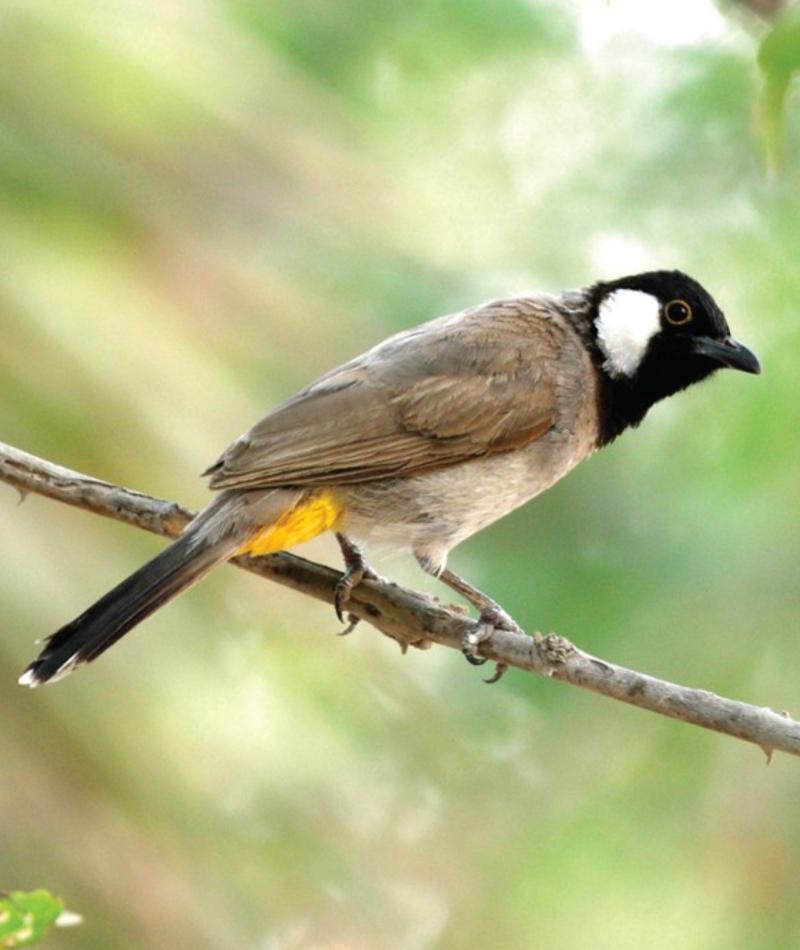
White-cheeked bulbul
Pycnonotus leucotis
Did you know?
- White-cheeked bulbuls are a part of the Pycnonotidae family, which they share with a variety of bulbuls.
- They are named for their bright white cheek feathers.
- They are also known as the white-eared bulbuls.
- They live in scrubland and woodland throughout the Middle East north of the Arabian Sea (from Oman to India).
- A female will lay two to four eggs per clutch.
Bulbuls
Like many bulbuls, white-cheeked bulbuls are named after a certain unique feature of their plumage. For this bulbul species, their name comes from the bright white feathers on their cheeks. There are over 100 species of bulbuls. White-cheeked bulbuls songbirds have a wingspan that reaches seven to eight inches. They enjoy fruit and are common in their ecosystem.
Young and Family
White-cheeked bulbul pairs work together to build small nests using twigs and grasses. They lay two to four eggs, and both parents gather food to feed their chicks.
Threat Level
- Unknown
- Common
- Near Threatened
- Threatened
- Endangered
- Critically Endangered
- Extinct in the Wild
Common
The White-cheeked bulbul is widespread and abundant.
Range
Middle East north of the Arabian Sea, from Oman to India
Habitat
Dry woodland, thorn scrub and semi-desert scrub

We care about white-cheeked bulbuls
We support white-cheeked bulbuls in the Bird House at the Zoo. Learn more about how we are helping wildlife around the world: Dedicated to Conservation
Find this animal in Historic Hill

SAINT LOUIS ZOO ZONE
Historic Hill
Historic Hill is a lovely stroll through one of the oldest parts of the Saint Louis Zoo. From the 1904 World’s Fair Flight Cage to the Spanish architectural flavor of the 1920s in the Bird House, Primate House and Herpetarium to the finishing touches of our thoroughly modern exhibits, this area of the Zoo has a unique ambiance and a nostalgic history that make it a great destination.

